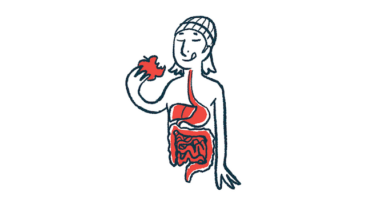Irritable bowel syndrome associated with hEDS in teens: Study
Researchers conducted a study of more than 1.6 million adolescents in Israel

Teens with unusually flexible joints, like in hypermobile Ehlers–Danlos syndrome (hEDS), are more than twice as likely to have irritable bowel syndrome (IBS) than those without them, a large study of more than 1.6 million Israeli adolescents indicates.
Knowing the odds of having IBS — a condition that affects the digestive tract and can cause abdominal cramps, bloating, diarrhea, and constipation — can lead to early diagnosis and appropriate treatment with diet, lifestyle changes, and medications. The study, “Hypermobility spectrum disorders and irritable bowel syndrome: A nationwide study of 1.6 million adolescents,” was published in the Journal of Gastroenterology and Hepatology.
Both hEDS and hypermobility spectrum disorder (HSD) are conditions of the connective tissue that manifest as hypermobile joints, that is, joints that move past the expected range of motion.
“The clinical presentations of HSD and hEDS overlap extensively,” the researchers wrote. While both may include digestive tract symptoms, not much is known about the link between them and IBS.
“A better understanding of the gastrointestinal (GI) symptoms in people with HSD/hEDS can promote timely diagnosis and tailored treatment strategies,” wrote the researchers, who reviewed data of 1,626,407 adolescents, ages 16-19, who had a medical checkup sometime between 1998 and 2020, a year before they entered military service in Israel.
Prevalence of IBS in HSD/hEDS
A total of 4,686 had HSD/hEDS. Their mean age was 17.2, and just over half (54%) were boys. Most (89%) had been born in Israel. The adolescents who didn’t have HSD/hEDS served as controls.
According to the 2017 framework for classifying EDS, people with hypermobile joints but who don’t meet the full criteria for hEDS are diagnosed with HSD. The data were mostly obtained prior to 2017, however.
“We were unable to distinguish between hEDS and HSD due to the lack of information on the adolescents’ familial history of hypermobility, which could differentiate between the two conditions,” the researchers wrote.
As part of the medical checkup, everyone was asked about recent abdominal pain, constipation, diarrhea, vomiting, and weight loss over the previous year.
Those with chronic GI symptoms were referred to a specialty doctor who made a diagnosis of IBS based on the presence of recurrent abdominal pain (at least once a week in the previous three months) and pain related to bowel movements.
A total of 8,822 adolescents received a diagnosis of IBS, which was significantly more common in teens with HSD/hEDS than in controls (1.5% vs. 0.5%).
When the researchers ran a model to calculate the odds of having IBS, they found the teens with HSD/hEDS were 2.16 times more likely than controls to have it.
The researchers then adjusted their analysis to consider age, sex, socioeconomic status, education, and immigration status. In this model, the effect was even stronger: teens with HSD/hEDS had 2.58 times higher odds of having IBS. Boys and girls had about the same odds, 2.6 vs. 2.46. “The association was present in both male and female adolescents,” the researchers wrote.
When they singled out adolescents without any other coexisting condition that required chronic medical treatment or follow-up, nor had a history of cancer, major surgery, or psychiatric disease, the effect was even stronger, with those with HSD/hEDS having 3.56 times higher odds of IBS.
“We found a significant association between HSD/hEDS and IBS in a nationwide population-based study of over 1.6 million adolescents,” noted the researchers, who said knowing about the association may also “encourage future research on the shared [disease-related] pathways of the conditions and the development” of an IBS treatment tailored for those with HSD/hEDS.







